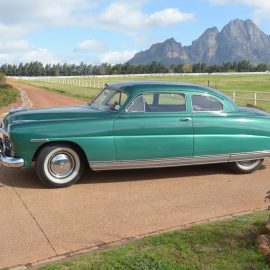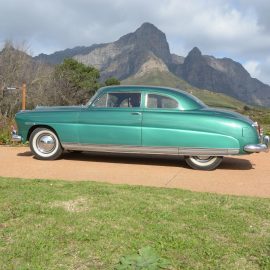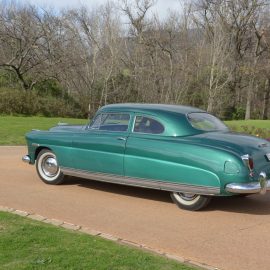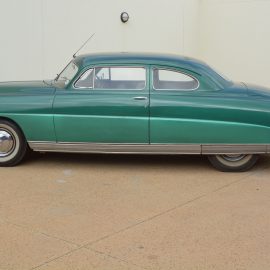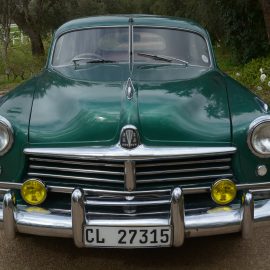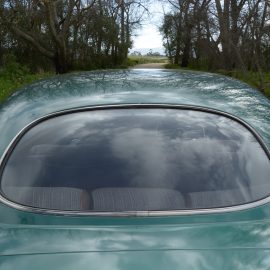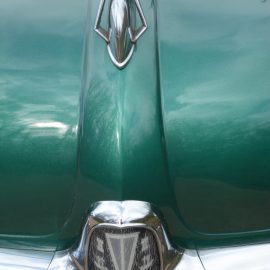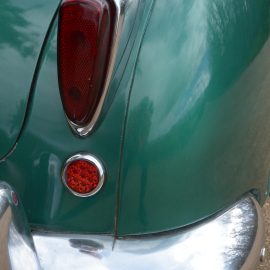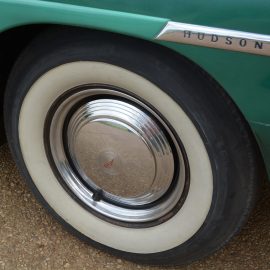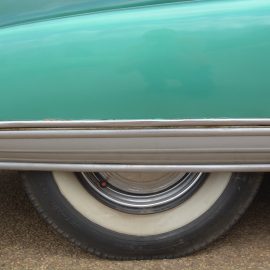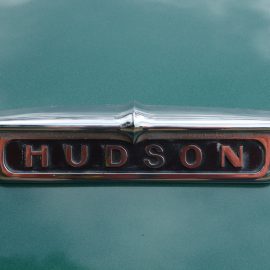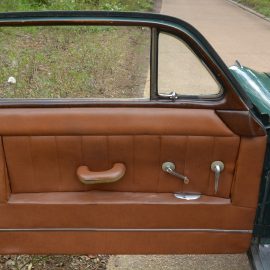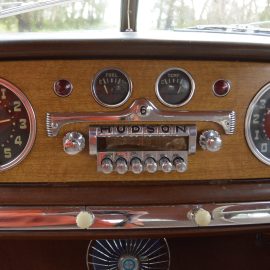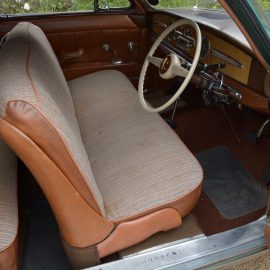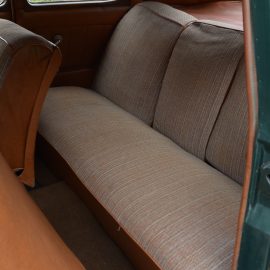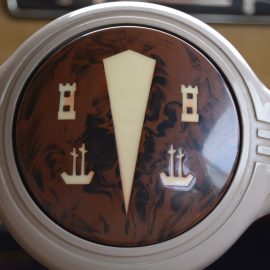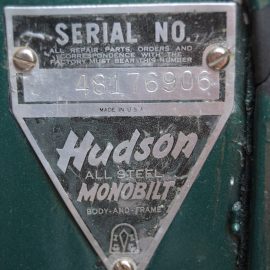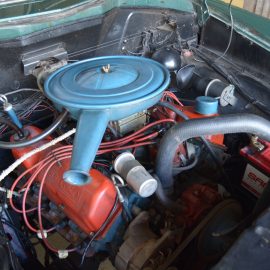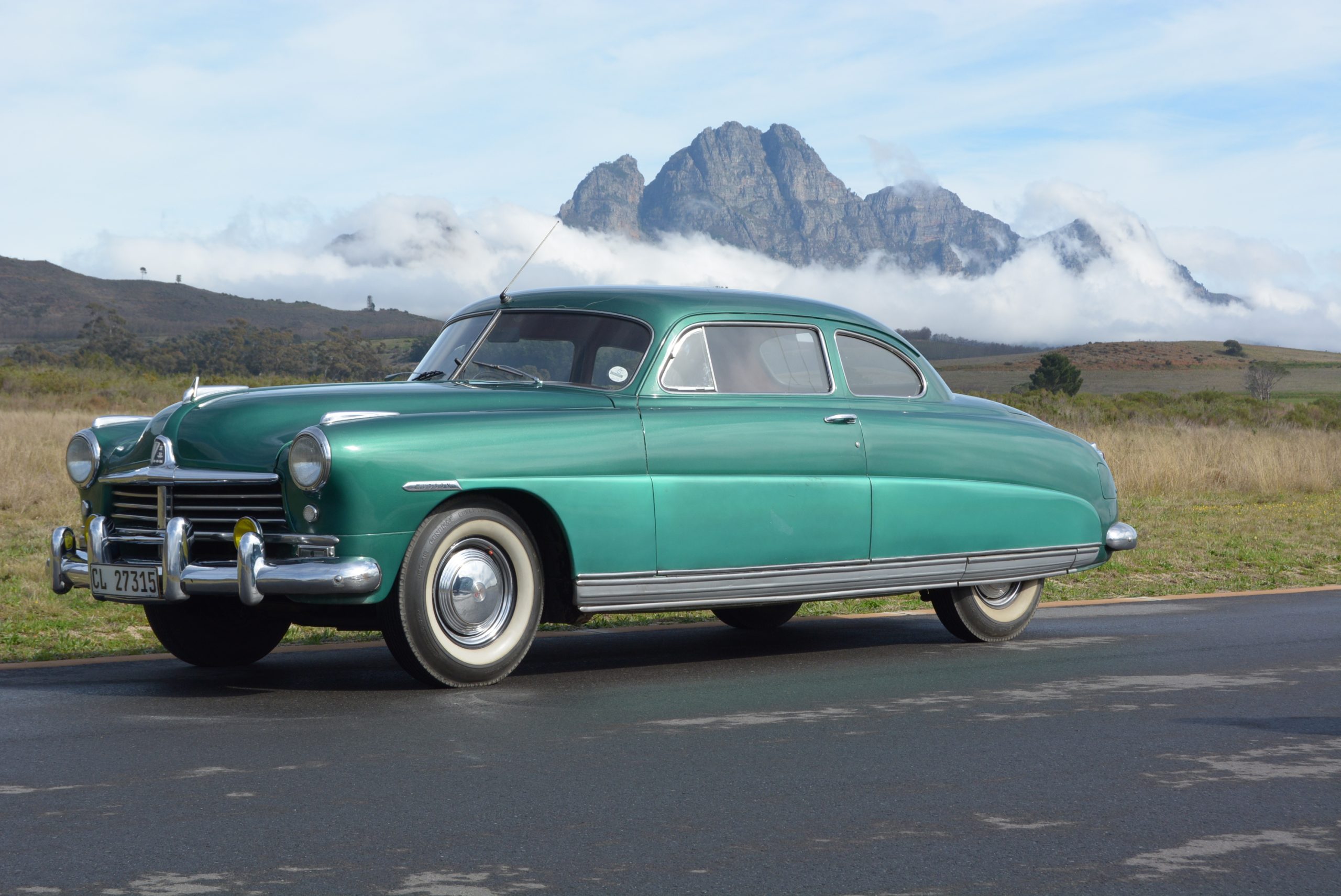
01 Aug Collection In Action: 1948 Hudson
From naval officer to wasp… With thoughts of Doc Hudson in mind, Mike Monk revels in a ground-breaking model that is as old as he is…
Most of you I’m sure will be aware of the animated movie CARS, which first hit our screens back in 2006 – yes, 17 years ago! Apart from the hero Lightning McQueen, one of the other stars (of what became a series) was Doc Hudson, with none other than petrol head Paul Newman doing the voiceover. Doc was a Hudson Hornet Coupé, the likes of which was built from 1951 to 1954, and was based on the ‘step down’ design that was first seen on the 1948 Commodore. And amongst FMM’s more imposing models in its collection is a pair of Commodores, one of which is a Coupé. So, taking a little bit of licence, let’s substitute L’Ormarins for Radiator Springs and follow in Doc’s tyre tracks…
The Hudson Motor Car Company was formed on 20 February 1909 by a conglomerate of eight Detroit businessmen who wanted to produce an automobile that would sell for less than $1 000. The name stemmed from Joseph L Hudson, a department store entrepreneur who provided the necessary capital and gave permission for the company to be named after him. The chief organiser of the company was Roy D Chapin Snr, a young executive who had worked with Ransom E Olds, and under his leadership, the first car, the Hudson 20, was driven out of a small factory in the Motor City on July 3, less than six months after the company’s birth. Over 4 000 units were sold in the first year, and 4 508 in 1910. Although Hudson only existed for just under 50 years, the company was quite innovative during that time, typified by its luxurious Commodore range.
Hudson established a few auto ‘firsts’, including the use of dual brakes, dashboard oil-pressure and generator warning lights, and the adoption of a balanced crankshaft, which allowed Hudson’s first in-house produced engine, an in-line six launched in 1916, to work at a higher rotational speed while remaining smooth, helping to develop more power for its size than lower-speed engines. Prior to the ‘Super Six’, the company designed engines that were manufactured by Continental Motors Company. Hudson transmissions also used an oil bath and cork clutch mechanism that proved to be as durable as it was smooth.
In 1936 Hudson brought in a new ‘rhythmic ride’ suspension, which supported the live front axle via two steel bars and (softer) leaf springs. The 1939 models joined other American cars in the use of a column-mounted gearshift lever. Hudson became the first car manufacturer to use foam rubber in its seats. For 1940 the company introduced coil spring independent front suspension with shock absorbers mounted within the springs, and true centre-point steering on all its models. However, Hudson sales for 1940 were lower than in 1939 and the company continued to lose money. But then came the first-generation Commodore – and war.
Once WWII was over and having generated a small profit from its wartime effort during which Hudson made aircraft and landing craft engines, in 1946 the company returned to motor manufacture with facelifted versions of the pre-war models, which boasted a three-speed helical-gear all-synchromesh gearbox. These cars were notable for having exterior and interior trim design input by Elizabeth Anna ‘Betty’ Thatcher, the first American female automotive designer. The second generation also only lasted two years before its ground-breaking replacement.
Often hailed as one of the great post-war designs, production of the third-generation Hudson Commodore began in December 1947 and was made available in just three versions – a four-door sedan, a two-door Club Coupé and a two-door Brougham Convertible. Engines on offer were the same as those for the lesser Super Six and Super Eight models, namely a 262ci (4293cc) L-head in-line six and, oddly, a smaller, less powerful 254ci (4162cc) L-head straight-eight.
Designed by Frank Spring, the car’s all-steel unibody design was quite radical for its time. Its construction incorporated a perimeter frame that allowed for the seats to be set lower than would be possible with the more common separate body/chassis assembly. Passengers ‘stepped down’ into the car, which became a catchphrase when referring to the design. Hudson actually trademarked the design as Monobilt. Apart from saving weight, the layout offered some side impact safety protection and lowered the car’s overall height and, consequently, the centre of gravity. This benefitted handling, a characteristic for which the car became universally acclaimed. A character line ran from the front to back that visually lowered the car even further, so that “the new Hudson looked like a dream car straight from the auto show”.
A narrow glasshouse, that bodyside character line and spats over the rear wheels made the car appear exceptionally low and sleek. In later years, the look appealed to hot rodders, who often converted Commodores into lead sleds, a ground-hugging expression of automotive art that usually horrifies purists but thrills the California Custom Culture.
Inside, seats featured foam cushions and striped, Bedford Cord upholstery. Standard luxury features included a two-tone walnut-grained dashboard, instrument light dimmer, swivelling sun visors, electric clock, opening rear quarter-lights, and a 17-inch plastic steering wheel. Hudson offered a wide range of powertrain and convenience options on all models.
FMM’s Commodore Coupé serial number is 48176906, which determines it as being a 1948 Super Six model, which should have the 262ci (4293cc) in-line six-cylinder engine mated with a three-speed column shift manual gearbox. However, under the bonnet is 327ci (5358cc) Chev V8 with a three-speed autobox! Checking this out with Waldie’s son Rudi, I learnt that his “Dad bought the car like that for its beautiful styling! He so liked the lines of it”. So when the conversion was carried out is unknown, but FMM has a correct in-line 6 that workshop manger Lorenzo Farella says they want to recommission in the future.
Tipping the scale at around 1 700 kg, the Coupé is no lightweight but the powertrain conversion manages to overcome any performance limits that the car’s mass may otherwise have imposed. The non-assisted steering is not too heavy, and while ride and handling is what one would expect from such a bulky car, it doesn’t need to be urged along. It is a cruiser not a bruiser, and for anyone looking on, the shallow glasshouse adds an air of mystery to the occupants. Even by American standards of the time, the car is imposing and certainly makes a statement. And to be honest, the V8 made driving this Commodore a real delight, adding to the all-round appeal of the Coupé – big and bold, stylish and, yes, sophisticated – for its time. Model year sales for 1948 were 117 200, and Hudson was ranked 11th as the America’s largest automobile manufacturer.
A rollover crash during the final lap of the 1954 Fireball Beach 350 forced Doc Hudson to retire from racing. He took time out to study medicine and became a physician in Radiator Springs on US Route 66. He ran a medical office as a ‘doctor of internal combustion. Well-loved, he served not only as the town’s physician, but also as its judge. He was respected, and as his Hudson Hornet DNA contains strong Commodore links, let’s doff our racing helmets to his memory – and that of a rather special automobile…




